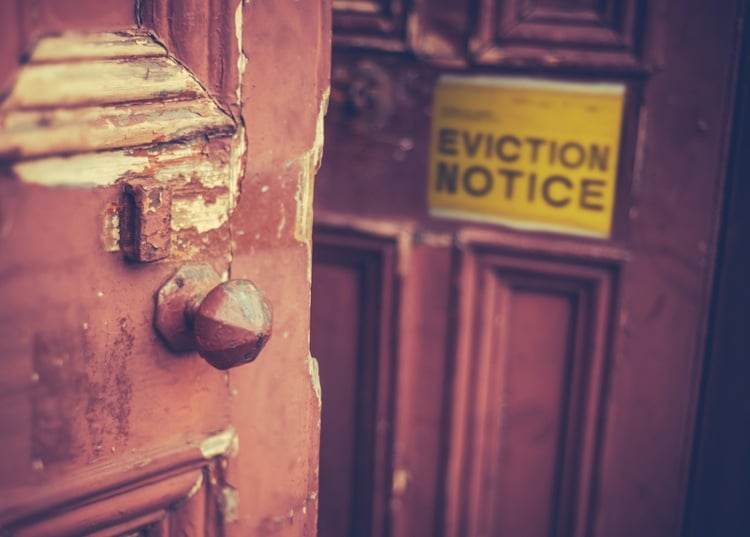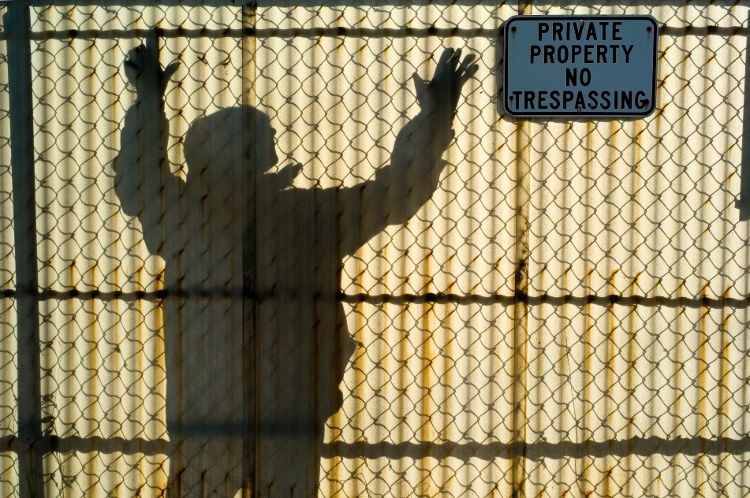Imagine walking into your rental property one day and hearing The Walking Dead theme song coming from the living room. You immediately realize that something is wrong, not because the music is playing full blast, but because there’s any music at all.
Entering the living room, you ask the people you find what they’re doing in your house and they tell you that they live there. Furthermore, they say that it’s their house and not yours, even though they never signed a lease. That’s when it dawns on you that your home has been taken over by squatters.
So, what’s a landlord to do next?
In this article, we’ll explain how squatting works, how a squatter could actually gain legal title to your rental property, and the process a landlord can typically follow to get rid of a squatter.
What is a squatter?
A squatter is someone who occupies your property without permission or paying rent, with the goal of gaining control over your property.
Oftentimes squatters know what they’re doing, and can act like they have the right to be in your property even when they really don’t. Believe it or not, there’s actually a website named Squat the Planet that includes information for professional squatters on cities with squatter-friendly laws (such as San Francisco).
Examples of a squatter
While a holdover tenant – which is a tenant who refuses to vacate after their lease has expired – could also be considered a squatter, technically a squatter is a stranger who never had permission to be in your property to begin with.
Let’s start by clarifying the difference between trespassing and squatting.
Trespassing is generally a criminal matter and refers to someone who illegally enters the property for a short period of time, such as a home being rehabbed or already occupied by a tenant.
Squatting is generally a civil matter and refers to illegal tenants who plan on staying in the property for a long period of time by making a claim of ownership.
How squatting happens:
- Someone who breaks into a vacant property and starts living there, such as a rental property being renovated or made ready for a new tenant with utilities fully turned on.
- An authorized roommate or illegal subtenant who refuses to leave once the lease comes to an end.
- An honest person who responded to a rental scam and signed a lease with a fake landlord to live in your rental property.
Why landlords should get rid of squatters ASAP
“Adverse possession” is a common law legal concept that dates back to the early 1300s. When a squatter occupies your property they can claim the right of adverse possession to gain legal title to your property if you don’t object to the squatter's presence.
In order for adverse possession to occur the squatter’s occupancy must be:
- Hostile, which means without permission of the property owner.
- Actual, as in physical occupation.
- Open and notorious, meaning it is obvious that the squatter is there.
- Exclusive and continuous for a certain period of time.
The legal resource website Nolo.com has a list of state-by-state rules on adverse possession to help landlords understand their legal rights with squatters.
The longer a squatter lives in your property the harder it can be to get rid of them. If you wait too long, your property could legally become the squatter’s property:
- More difficult for the landlord to assert the right of ownership the longer a squatter stays.
- Evicting a squatter could take months and a lot of money, especially if a professional squatter tries to claim in court that your property belongs to them.
- No rental income and significant damage during the time a squatter occupies your property.
How to get rid of squatters: dos and don’ts
Landlords should act swiftly and proactively when dealing with squatters. Being nice and negotiating with a squatter to leave likely won’t work, because their end game could very well be to gain the legal right to your property.
How to evict a squatter
The American Apartment Owners Association (AAOA) recommends following these steps when evicting squatters:
- Call the local police and file an official police report, the sooner the better. You can use the police report if you have to pursue an eviction in court as proof that you used a good faith effort to remove the squatter from your property.
- Serve the squatter with a formal eviction notice after you’ve filed a police report. An eviction notice is also known as an ‘Unlawful Detainer’ action in some states, which is a legal way to evict the squatter.
- File a lawsuit if the squatter refuses to leave. You may want to use a real estate attorney who specializes in residential evictions to make sure that you follow the correct legal process. After the hearing is scheduled and you receive a judgment in your favor, local law enforcement will be used to remove the squatter.
- Remove any possessions left behind by the squatter. Unfortunately, you can’t just throw the squatter’s possessions away. Most states require a property owner to serve the squatter with written notice stating the deadline they have to collect their belongings. Since the squatter will probably be difficult to find, you can ask the court to record the notice to the squatter as part of your official eviction documents.
What not to do
The same general guidelines that apply to evicting a tenant who doesn’t pay the rent also apply to squatters. Things that a landlord should not do when getting rid of a squatter include:
- Putting padlocks on the doors or changing the locks.
- Shutting off the utilities in an attempt to make the property uninhabitable.
- Attempting to intimidate the squatter in any way.
- Gathering a group of “friends” and attempting to remove the squatter on your own.
Do squatters have rights?
In most states, squatters do have rights, and the longer a landlord waits to remove a squatter the stronger a squatter’s rights can become. While squatter’s rights vary from state to state, a squatter can gain legal title to your property after a certain period of time through “adverse possession.”
Adverse possession occurs when the squatter enters your property without permission, lives in the property without trying to hide the fact that they are there, and for an extended length of time.
How to prevent squatters
By now it’s probably clear that the best way to prevent squatters is to keep your property rented to great tenants at all times.
If your place is vacant, for example, in-between tenant turns or when renovation work is being done, consider having the property inspected at least once a week or pay someone to occupy the home at night when the property isn’t being shown.
Other good ways to prevent squatters from occupying your property include:
- Post “No Trespassing” signs on doors and gates.
- Make sure doors and windows are locked at all times.
- Check the property routinely for signs of squatters.
- Ask your next-door neighbors to notify you if anything seems amiss.
- Screen potential tenants by ordering background and criminal reports, and verifying their rental history.
- Fill rental vacancies quickly by using online rental listing websites to reach as many qualified tenants as possible in the shortest amount of time.
Frequently asked questions
Q: What is the process for getting rid of a squatter?
The process for getting rid of a squatter is the same process used for evicting a tenant. Generally, the squatter must be served with proper notice, sued and taken to court, with local law enforcement removing the squatter after the court has ruled in favor of the landlord.
Q: How long does it take to evict a squatter?
While eviction times lines vary from state to state, as a rule of thumb it could take 30 – 60 days to evict a squatter, unless the squatter attempts to claim their right to your property through adverse possession.
Q: How do squatters gain adverse possession?
In order for a squatter to gain adverse possession four things must occur: 1) Occupation must be hostile without permission of the owner, 2) Squatter must physically occupy the property, 3) Occupation must be open, notorious, and obvious, 4) Squatter must occupy the property exclusively and continuously for a specific period of time.
Q: Where can a landlord learn more about adverse possession rules?
The legal resource website Nolo.com publishes a list of state-by-state rules on adverse possession. Local real estate attorneys who specialize in residential real estate law and evictions are another good source for learning about adverse possession rules.
Q: Can a landlord ask a squatter to sign a lease?
Yes, a landlord can ask a squatter to sign a lease. In fact, asking a squatter to sign a rental agreement is a good strategy to use if the occupant responded to a fake rental ad and signed a lease in the mistaken belief that the scammer was actually the landlord. In cases like these, the squatter isn’t really a squatter, and could turn out to be a great tenant for your rental property.
Final thoughts
While squatters do have rights, as a landlord you should do everything you legally can to prevent a squatter from gaining the right to your property.
If your place is vacant between a tenant turn or updating work, check on the place frequently to make sure that a squatter hasn’t moved in. On the off chance you do find a squatter, act proactively to remove the squatter by calling the police and beginning the eviction process if necessary.











